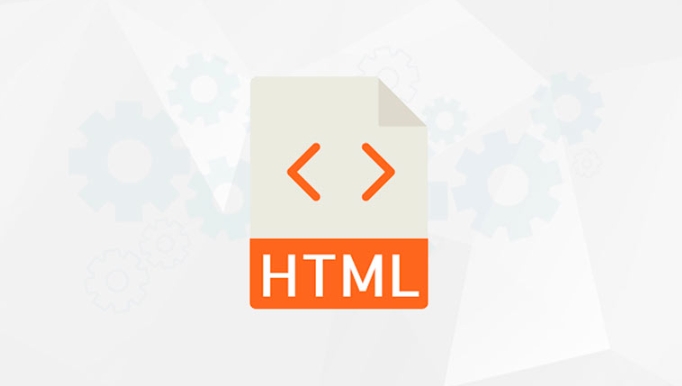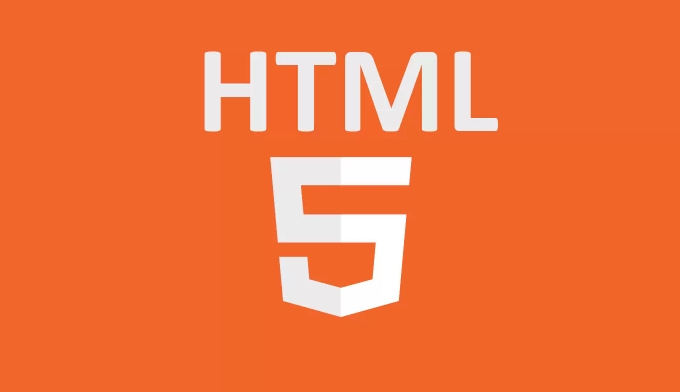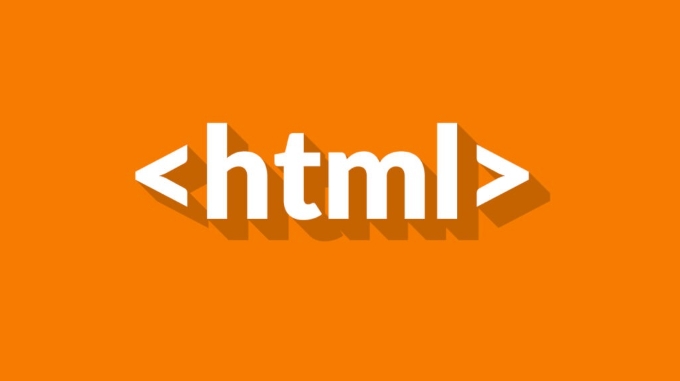The <canvas> element of HTML5 is a blank canvas for drawing graphics using JavaScript on a web page. It does not display anything by itself and must draw shapes, text, images and animations through scripts. To use <canvas>, first add a <canvas> tag with id, width, and height in HTML; then get the element through document.getElementById() and call .getContext('2d') to get the drawing context; then draw the content using the context method. It can be used to draw shapes, render text, display images, create animations, and build games. It should be noted that canvas is pixel-based, lacks built-in event processing and barrier-free support, and performance is also affected by complexity. Additionally, the context should be checked before drawing to ensure compatibility.

The <canvas></canvas> element in HTML5 is like a blank drawing board you can use to render graphics on a web page using JavaScript. Unlike other HTML elements, it doesn't do anything visible by itself — you have to script it to draw shapes, text, images, and even animations.

Basic Structure of the Canvas Element
To use <canvas></canvas> , you start by placing it in your HTML like this:
<canvas id="myCanvas" width="500" height="300"></canvas>
This creates a rectangular area on the page where you can draw. The width and height attributes define its size, and the id helps you target it with JavaScript.

But just adding the tag isn't enough. You need JavaScript to access it and start drawing.
Here's how to get started in JS:

- Use
document.getElementById()to grab the canvas by its ID - Call
.getContext('2d')to get a drawing context - Then use methods on that context to draw lines, shapes, text, etc.
Once you have the context, you're ready to go.
What You Can Do With Canvas
The real power of <canvas> comes from what you can create with it. Here are some common uses:
- Draw shapes : Rectangles, circles, paths, and more
- Render text : Both filled and stroked text styles
- Display images : Load and show external images or video frames
- Create animations : Redraw content repeatedly for motion effects
- Build games : Game developers often use canvas for rendering visuals
For example, if you want to draw a red square, you might write:
const canvas = document.getElementById('myCanvas'); const ctx = canvas.getContext('2d'); ctx.fillStyle = 'red'; ctx.fillRect(50, 50, 100, 100);
That code fills a 100x100 pixel rectangle at position (50,50) with red color.
Things to Keep in Mind When Using Canvas
Canvas is powerful, but it also has some quirks and limitations you should know about:
- It's pixel-based , so scaling can cause blurry graphics
- No built-in event handling — if you want click detection, you have to code it manually
- Not accessible by default — screen readers won't interpret canvas content unless you add extra ARIA info
- Performance matters — complex animations or large canvases can slow down your page
Also, always remember to check if the canvas context exists before drawing, especially if you're supporting older browsers.
That's the basics of the <canvas></canvas> element in HTML5. It's a flexible tool once you get the hang of it, and opens the door to interactive visuals right in the browser.
The above is the detailed content of What is the canvas element in HTML5?. For more information, please follow other related articles on the PHP Chinese website!

Hot AI Tools

Undress AI Tool
Undress images for free

Undresser.AI Undress
AI-powered app for creating realistic nude photos

AI Clothes Remover
Online AI tool for removing clothes from photos.

Clothoff.io
AI clothes remover

Video Face Swap
Swap faces in any video effortlessly with our completely free AI face swap tool!

Hot Article

Hot Tools

Notepad++7.3.1
Easy-to-use and free code editor

SublimeText3 Chinese version
Chinese version, very easy to use

Zend Studio 13.0.1
Powerful PHP integrated development environment

Dreamweaver CS6
Visual web development tools

SublimeText3 Mac version
God-level code editing software (SublimeText3)

Hot Topics
 How can CSS be used to implement dark mode theming on a website?
Jun 19, 2025 am 12:51 AM
How can CSS be used to implement dark mode theming on a website?
Jun 19, 2025 am 12:51 AM
ToimplementdarkmodeinCSSeffectively,useCSSvariablesforthemecolors,detectsystempreferenceswithprefers-color-scheme,addamanualtogglebutton,andhandleimagesandbackgroundsthoughtfully.1.DefineCSSvariablesforlightanddarkthemestomanagecolorsefficiently.2.Us
 Can you explain the difference between em, rem, px, and viewport units (vh, vw)?
Jun 19, 2025 am 12:51 AM
Can you explain the difference between em, rem, px, and viewport units (vh, vw)?
Jun 19, 2025 am 12:51 AM
The topic differencebetweenem, Rem, PX, andViewportunits (VH, VW) LiesintheirreFerencepoint: PXISFixedandbasedonpixelvalues, emissrelative EtothefontsizeFheelementoritsparent, Remisrelelatotherootfontsize, AndVH/VwarebaseDontheviewporttimensions.1.PXoffersprecis
 What are CSS Houdini APIs, and how do they allow developers to extend CSS itself?
Jun 19, 2025 am 12:52 AM
What are CSS Houdini APIs, and how do they allow developers to extend CSS itself?
Jun 19, 2025 am 12:52 AM
CSSHoudini is a set of APIs that allow developers to directly manipulate and extend the browser's style processing flow through JavaScript. 1. PaintWorklet controls element drawing; 2. LayoutWorklet custom layout logic; 3. AnimationWorklet implements high-performance animation; 4. Parser&TypedOM efficiently operates CSS properties; 5. Properties&ValuesAPI registers custom properties; 6. FontMetricsAPI obtains font information. It allows developers to expand CSS in unprecedented ways, achieve effects such as wave backgrounds, and have good performance and flexibility
 What is the significance of Vue's reactivity transform (experimental, then removed) and its goals?
Jun 20, 2025 am 01:01 AM
What is the significance of Vue's reactivity transform (experimental, then removed) and its goals?
Jun 20, 2025 am 01:01 AM
ReactivitytransforminVue3aimedtosimplifyhandlingreactivedatabyautomaticallytrackingandmanagingreactivitywithoutrequiringmanualref()or.valueusage.Itsoughttoreduceboilerplateandimprovecodereadabilitybytreatingvariableslikeletandconstasautomaticallyreac
 What are the key differences between inline, block, inline-block, and flex display values?
Jun 20, 2025 am 01:01 AM
What are the key differences between inline, block, inline-block, and flex display values?
Jun 20, 2025 am 01:01 AM
Choosing the correct display value in CSS is crucial because it controls the behavior of elements in the layout. 1.inline: Make elements flow like text, without occupying a single line, and cannot directly set width and height, suitable for elements in text, such as; 2.block: Make elements exclusively occupy one line and occupy all width, can set width and height and inner and outer margins, suitable for structured elements, such as; 3.inline-block: has both block characteristics and inline layout, can set size but still display in the same line, suitable for horizontal layouts that require consistent spacing; 4.flex: Modern layout mode, suitable for containers, easy to achieve alignment and distribution through justify-content, align-items and other attributes, yes
 How can CSS gradients (linear-gradient, radial-gradient) be used to create rich backgrounds?
Jun 21, 2025 am 01:05 AM
How can CSS gradients (linear-gradient, radial-gradient) be used to create rich backgrounds?
Jun 21, 2025 am 01:05 AM
CSSgradientsenhancebackgroundswithdepthandvisualappeal.1.Startwithlineargradientsforsmoothcolortransitionsalongaline,specifyingdirectionandcolorstops.2.Useradialgradientsforcirculareffects,adjustingshapeandcenterposition.3.Layermultiplegradientstocre
 How can internationalization (i18n) and localization (l10n) be implemented in a Vue application?
Jun 20, 2025 am 01:00 AM
How can internationalization (i18n) and localization (l10n) be implemented in a Vue application?
Jun 20, 2025 am 01:00 AM
InternationalizationandlocalizationinVueappsareprimarilyhandledusingtheVueI18nplugin.1.Installvue-i18nvianpmoryarn.2.CreatelocaleJSONfiles(e.g.,en.json,es.json)fortranslationmessages.3.Setupthei18ninstanceinmain.jswithlocaleconfigurationandmessagefil
 How does provide and inject allow for deep component communication without prop drilling in Vue?
Jun 20, 2025 am 01:03 AM
How does provide and inject allow for deep component communication without prop drilling in Vue?
Jun 20, 2025 am 01:03 AM
In Vue, provide and inject are features for directly passing data across hierarchical components. The parent component provides data or methods through provide, and descendant components directly inject and use these data or methods through inject, without passing props layer by layer; 2. It is suitable for avoiding "propdrilling", such as passing global or shared data such as topics, user status, API services, etc.; 3. Note when using: non-responsive original values ??must be wrapped into responsive objects to achieve responsive updates, and should not be abused to avoid affecting maintainability.






